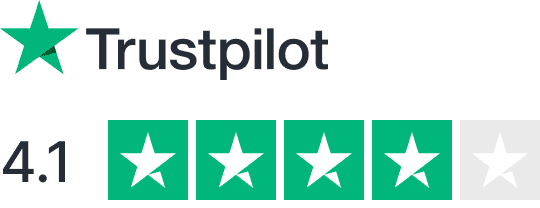Remote work has transformed how LATAM teams build trust. Here are 5 proven methods that blend the region’s relationship-driven culture with effective digital practices:
- Informal Team Meetings: Weekly "cafecitos" and cultural spotlights foster personal connections.
- Adapt to Communication Styles: Use video calls for key discussions, personal check-ins, and flexible communication.
- Two-Way Feedback: Regular feedback sessions with anonymous surveys create a safe space for growth.
- Celebrate Local Holidays: Shared cultural calendars and virtual events boost engagement and team bonding.
- Structured Decision-Making: Use frameworks like RAPID to ensure clarity and collaboration.
Key Stats:
- 76% of LATAM employees report higher productivity in remote setups.
- Companies with high trust see 50% higher productivity and 2.5x revenue growth.
These strategies help LATAM teams maintain strong relationships while thriving in remote environments.
Managing Cross Cultural Remote Teams
1. Schedule Informal Team Meetings
To build trust in remote LATAM teams, it’s essential to create opportunities for personal connections. One effective way is through structured virtual rituals, often referred to as "cafecitos." These short, informal meetings mirror the region’s relationship-focused work culture while fitting seamlessly into a remote setup.
Research highlights that these gatherings are most effective when they’re brief – around 15-30 minutes – and held consistently. This keeps the team engaged without interrupting their workflow.
Here’s a breakdown of meeting types that work well:
| Meeting Type | Frequency | Purpose | Trust Impact |
|---|---|---|---|
| Virtual Coffee Breaks | Weekly | Personal bonding and trust | Strengthens team relationships |
| Cultural Spotlight Sessions | Monthly | Cross-cultural understanding | Builds cultural awareness |
| Welcome Sessions | For new hires | Onboarding and integration | Boosts job satisfaction by 30% |
Tips for Virtual Team Bonding
Make these meetings meaningful by blending cultural relevance with thoughtful planning. Some teams also use asynchronous voice or video channels to encourage spontaneous check-ins.
Leaders should focus on facilitating rather than steering discussions. This aligns with LATAM’s collaborative work culture and prioritizes building personal connections, even in a remote setting. By doing so, you can maintain the region’s emphasis on human relationships while adapting to virtual work environments.
2. Match LATAM Communication Patterns
After informal meetings, it’s essential to align communication methods to maintain the relationship-driven style of LATAM teams. These teams excel when remote communication respects their flexible schedules and prioritizes building personal connections.
Video-First Communication
For LATAM teams, video calls are key for important conversations. These calls mimic in-person interactions, helping to build trust through familiar social cues. Studies show that teams using video meetings report better engagement and retention rates, with employees who feel connected to company culture being 23% more productive.
Focus on Personal Connections
LATAM teams often prefer a more personal touch in professional interactions. Effective remote managers begin meetings with genuine personal check-ins rather than diving straight into business. This approach reflects the cultural emphasis on personal relationships as a foundation for work.
When providing feedback, an indirect tone works best. For example, instead of saying, "You missed the deadline", try asking, "How can we adjust timelines to support everyone’s workflow?" This softer approach maintains trust while addressing the issue.
Managing Time and Responses
LATAM teams often juggle multiple tasks, leading to fluid communication styles. To navigate this, establish clear but adaptable expectations:
- Urgent: Use specific channels and set clear deadlines.
- Routine: Allow flexibility within regular work hours.
- Planning: Build in extra time for relationship-focused discussions.
Showing patience and understanding for this style reflects cultural awareness and strengthens team relationships. Teams that adjust to these patterns often see better collaboration.
Language Tips
For multilingual teams, ensure communication is straightforward. Use simple wording and include visuals when possible. For complex discussions, consider assigning bilingual "language buddies" to help maintain clarity.
sbb-itb-a3fbb4e
3. Set Up Regular Two-Way Feedback
After aligning communication, LATAM teams build trust by establishing effective feedback systems that respect cultural norms and encourage growth.
Establish a Clear Feedback Schedule
A structured schedule helps maintain consistency and focus. Here’s a simple framework:
| Feedback Type | Frequency | Duration | Purpose |
|---|---|---|---|
| Quick Check-ins | Weekly/Bi-weekly | 15-30 mins | Informal updates on progress |
| One-on-One Sessions | Monthly | 45-60 mins | In-depth performance reviews |
| Team Reviews | Quarterly | 90 mins | Discuss team goals and dynamics |
Create Psychological Safety
In LATAM cultures, challenging authority can sometimes feel uncomfortable. To address this, some companies have introduced anonymous surveys, leading to a 15% drop in turnover. This approach supports the relationship-driven values of LATAM teams, fostering an environment where everyone feels safe to share their thoughts.
Use Culturally Appropriate Methods
When collecting feedback, tailor your approach to fit LATAM cultural preferences. For example:
- Highlight Team Achievements: Frame discussions around group successes rather than focusing solely on individual performance.
Leverage Technology Wisely
Use technology to make feedback processes more inclusive and effective:
- Asynchronous: Set up digital suggestion boxes for ongoing input.
- Anonymous: Use survey tools to gather honest opinions on sensitive topics.
- Collaborative: Introduce peer feedback platforms to encourage team-wide contributions.
Measure and Adjust
Structured feedback systems have been shown to reduce turnover by nearly 15%. Track how often team members participate and complete feedback activities, then refine the process as needed. This approach respects LATAM’s focus on relationships while adapting to digital tools for modern workflows.
4. Share Local Holidays and Events Online
LATAM teams build stronger connections by embracing and celebrating their cultural traditions. With over 140 public holidays across Latin America, these occasions present a great way to foster trust and camaraderie among remote teams by recognizing and honoring cultural differences.
Create a Shared Cultural Calendar
Using a shared cultural calendar can help teams stay aware of important holidays and events across different regions. For example, Globant’s "Cultural Celebration Series" introduced monthly virtual events spanning 18 countries. The result? A 35% boost in cross-team collaboration and a 28% rise in employee satisfaction.
Turn Regional Celebrations into Team Activities
Here are a few ways to transform regional holidays into engaging team rituals:
| Event Type | Purpose | Engagement Method |
|---|---|---|
| Virtual Cooking Classes | Share traditional holiday recipes | Live demonstrations and group participation |
| Digital "Tours" | Experience local festivities | Real-time video streaming |
| Holiday Gift Exchange | Celebrate shared traditions | Cross-border care packages |
Offer Flexible Holiday Policies
Acknowledging local holidays is crucial. In fact, 89% of LATAM employees feel more trust when their global teams recognize their unique holidays. Flexible time-off policies can make a big difference here.
Use Dedicated Digital Spaces
Platforms like Slack or Microsoft Teams can host dedicated channels for cultural exchange. These spaces encourage ongoing conversations about local celebrations and traditions, helping to keep the dialogue alive.
Track the Impact of Cultural Integration
Measuring the success of cultural initiatives is key. Companies that monitor these efforts often see stronger trust within their teams. Use tools like:
- Monthly cultural inclusion surveys
- Event participation metrics
- Data on trust and collaboration between teams in different regions
5. Create Clear Team Decision Steps
LATAM teams build stronger trust by combining cultural traditions with open and structured decision-making processes that reflect their collaborative values.
Implement the RAPID Framework

The RAPID model is a practical tool for decision-making in remote LATAM teams. It clearly defines roles to streamline the process:
| Role | Responsibility | Builds Trust By |
|---|---|---|
| Recommend | Propose solutions with data | Highlighting expertise and preparation |
| Agree | Validate and approve decisions | Bringing in diverse perspectives |
| Perform | Carry out the decision | Showing accountability |
| Input | Provide feedback and insights | Encouraging inclusivity |
| Decide | Make the final call | Establishing clear leadership |
This framework aligns with LATAM’s focus on group consensus while addressing the needs of remote work setups.
Balance Cultural Preferences
Use bilingual documentation and allocate time for team discussions before finalizing decisions. These steps honor the collaborative nature of LATAM teams within a remote work environment.
Leverage Collaborative Tools
Tools like Miro and Asana allow teams to visualize decision-making processes and maintain transparency. For example, Mercado Libre’s engineering teams use these platforms effectively to keep everyone aligned.
Document and Track Decisions
Keep a centralized log of decisions to ensure clarity and accountability. Include these key components:
| Component | Details to Include |
|---|---|
| Context | Why the decision was made |
| Stakeholders | Roles and contributions of team members |
| Timeline | Important dates and deadlines |
| Impact | Expected results and success criteria |
| Follow-up | Next steps and assigned responsibilities |
Tackle Time Zone Differences
Many LATAM teams work across different time zones. To address this, companies like Nubank have adopted a "24-hour decision rule", giving all team members enough time to share input before decisions are finalized.
Conclusion
The five methods for building trust deliver clear, measurable outcomes: companies with high trust levels see 2.5 times more revenue growth and 50% higher productivity compared to those with low trust.
For example, Globant introduced cross-cultural virtual team activities across Argentina, Colombia, and Mexico in 2022, which led to impressive results:
| Metric | Result |
|---|---|
| Employee Engagement | Increased by 28% |
| Project Completion | Improved by 15% |
| Team Turnover | Reduced by 22% |
















